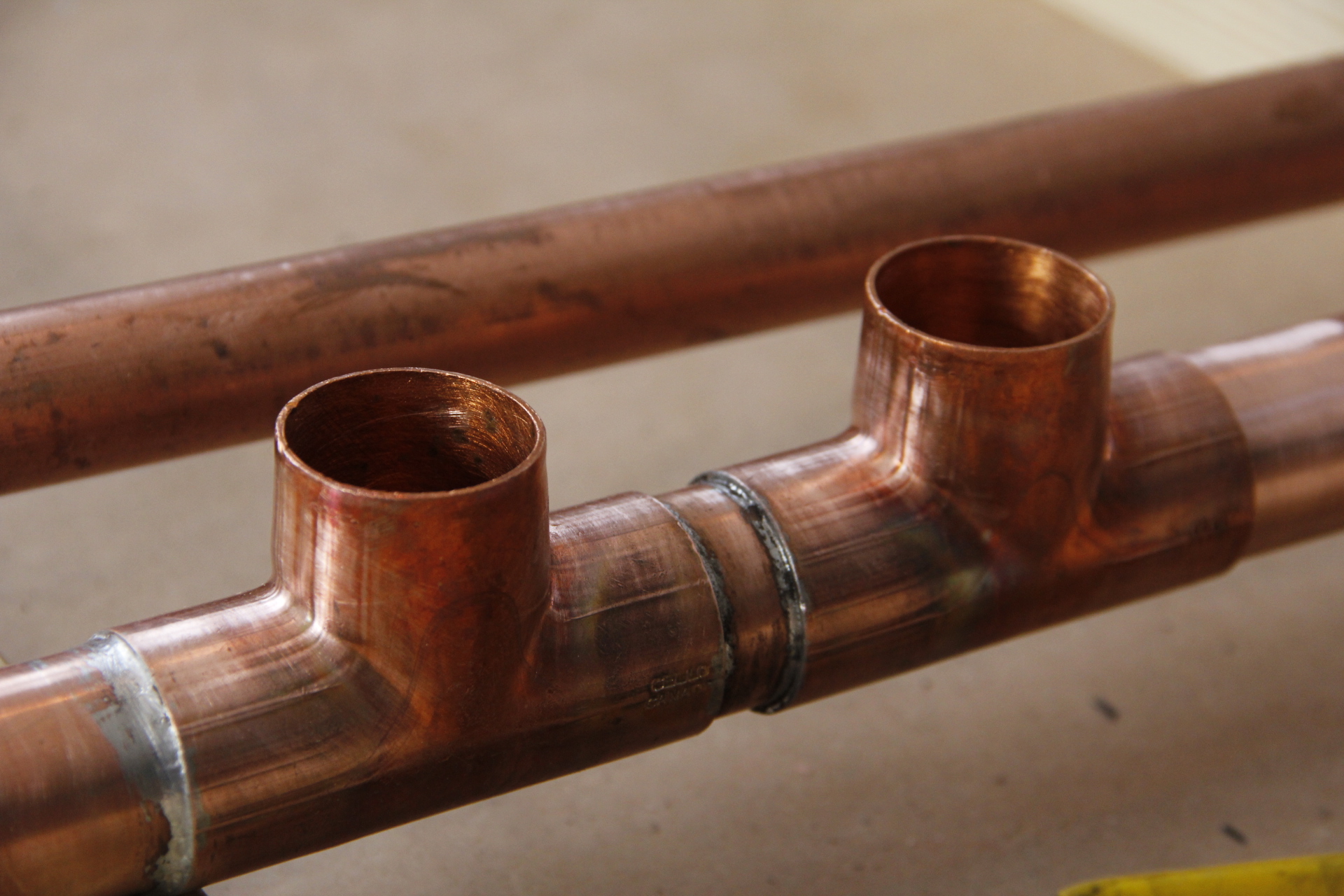As a schematic it's pretty lousy since it doesn't tell flow directions, and some of the fittings are obscured. But it's way better than a 10,000 word description.
There appears to be at least one plumbing error of significance on the hydraulic separation plumbing. The tees where the primary loop branches into/out-of the system loop (the tees closest to the boiler) need to be very closely spaced. They should not more than 4 pipe diameters (looks like you have at least 6-7 pipe diameters between the tees), and closer is even better. Even with fatter diameter pipe they should not more than 12", per the instructions on p.28 of
the manual. Commercial hydraulic separators are typically many times the diameter of the plumbing going into them, with the loops plumbed to flow across each end of the hydraulic separator to minimize the interaction between the primary & secondary pump flows, effectively isolating them from a pump-pressurization point of viewlimiting the amount of primary loop flow that gets induced by the secondary pump:
That's also the ideal location for the expansion tank too, which makes it something of a shock-absorber.
If you can make the room, move the expansion tank to the other side of the tees too, so both the primary loop pump (the one inside the boiler) as well as the secondary pump (the green Taco) is pumping away from the expansion tank. Where it is currently located the secondary pump is pumping away from the expansion tank (which is correct), but the primary pump is pumping toward the expansion tank with the impedance of the heat exchanger and primary loop plumbing between the pump and the expansion tank.
On the return side of the primary loop tees there is also a U-turn made of ells (?), very close to the tees, which introduces some undesirable turbulence just before the point where it hits the point of hydraulic separation (the stub of pipe between the tees).
With that much pipe between the tees and the induced turbulence on the secondary just prior to the separator, the secondary pump flows are interacting with the primary loop flows, which may be causing the boiler to kick off at higher secondary flows(?). Piping per the installation manual would be an important first step. Make sure you have at least 8" of straight pipe on the secondary loop on both sides of the tees, and butt the tees as close as possible, to minimize the interaction at the point of hydraulic separation.
The contractor who installed it SHOULD make those changes at no charge, since at least the max spacing of the tees is spelled out in the installation manual. But even if you have to pay somebody, that's a good start, and has a good chance of making the thing behave properly over a wide range of radiation flow rates.
A schematic of what you have, including the approximate lengths of the radiation runs, etc. may still be useful.



